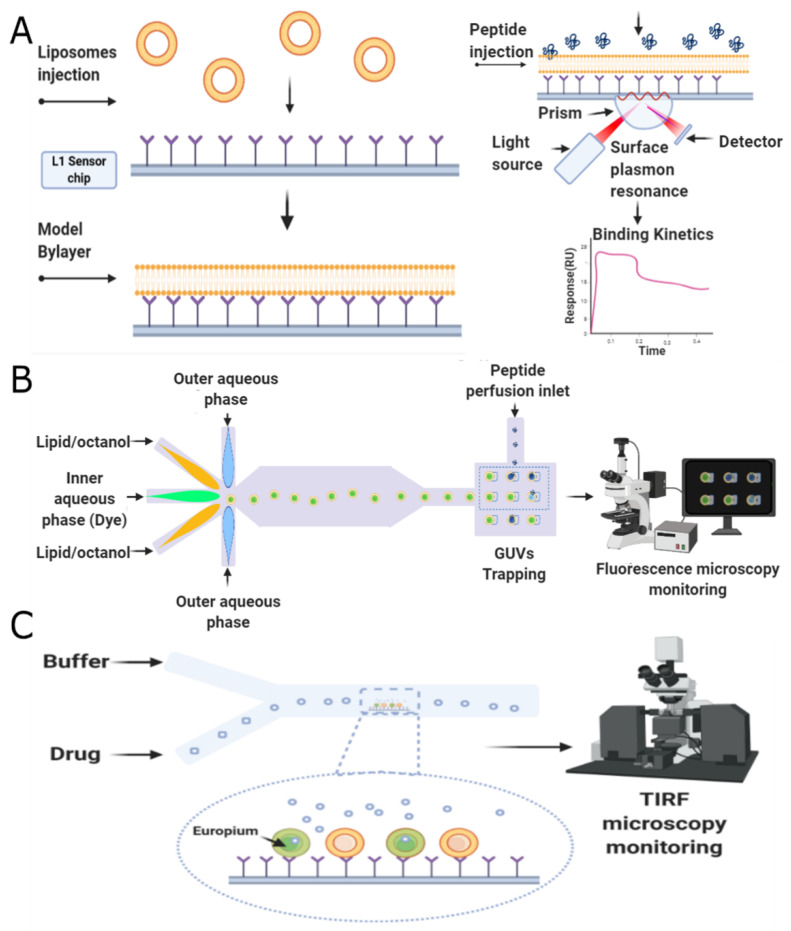Figure 8.
Membrane-based approaches for bioactive compounds screening. (A) Surface plasmon resonance (SPR) interaction analysis carried out by Hall et al. and Šakanovič et al. where a lipid planar bilayer is generated in the surface of a sensor chip in which the peptide membrane interactions are measured by surface plasmon resonance [231,232]; (B) Membrane-based screening using giant unilamellar vesicles (GUVs) as described by Nahas et al. where GUVs are generated by the octanol-assisted liposomes assembly method (OLA) technique and immobilized in a chamber where the peptides are injected in order to analyze the membranolytic activity by the leak of a dye previously encapsulated into the GUVs lumen. (C) Vesicle screening platform used by Kuhn where the GUVs are immobilized onto a glass-bottom and a delivery of the tetracycline is carried out to analyze the drug permeation using a total internal reflection fluorescence (TIRF) microscopy due to the red fluorescence complex generated by Europium-tetracycline binding.(Created with BioRender).

